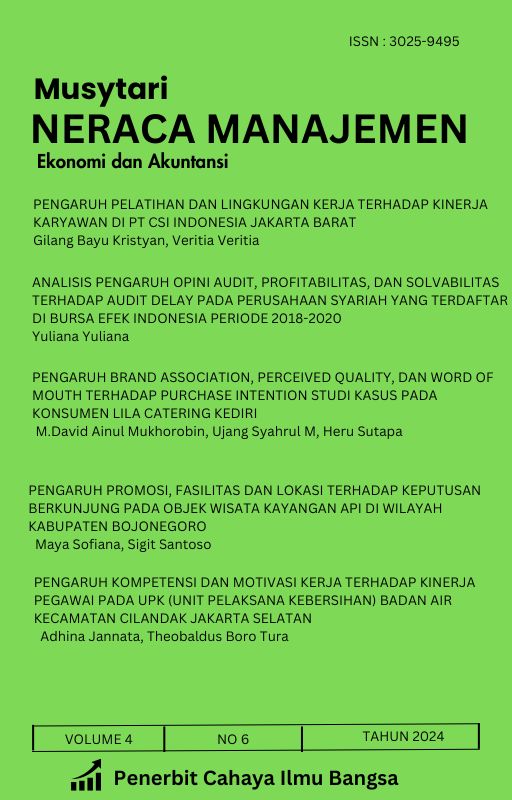STRATEGI INTELIJEN BISNIS UNTUK MENGHADAPI ANCAMAN CYBER: DEFINISI DAN PENERAPAN BUSINESS INTELLIGENCE STRATEGY FOR ADDRESSING CYBERSECURITY: DEFINITION AND ANALYSIS
Main Article Content
Abstract
Teknologi digital telah mengubah cara pelanggan, perusahaan, dan mitra mereka berinteraksi, menyebabkan dislokasi industri yang belum pernah terjadi sebelumnya, dan mengubah ekonomi bisnis secara signifikan. Sekarang perusahaan menggunakan berbagai teknologi, seperti seluler, Internet of Things (IoT), dan Kecerdasan Buatan (AI), untuk membangun dan memperkuat hubungannya dengan pelanggan dan mitra dengan fokus pada kebutuhan, penggunaan, dan keinginan mereka. Dalam beberapa tahun terakhir, pertumbuhan eksponensial teknologi informasi, terutama dalam hal penggunaan internet, telah memicu perdebatan tentang potensi ancaman yang dapat muncul. Jumlah ancaman dan serangan siber dan kompleksitasnya meningkat bersama dengan ukuran jaringan, yang membuat alat yang tersedia bagi penyerang semakin canggih dan efektif. Internet telah menjadi fenomena penting dalam kehidupan manusia seiring dengan kemajuan teknologi informasi. Ini memungkinkan aplikasi nirkabel seperti akses internet, pembayaran digital, dan pemesanan tiket. Meskipun ada keuntungan, penggunaan internet juga memiliki efek negatif, yaitu meningkatkan kemungkinan perilaku anti-sosial dan kejahatan siber yang sebelumnya dianggap tidak mungkin. Competitive Intelligence (CI) menjadi sangat penting dalam lingkungan bisnis yang semakin kompetitif. Komponen penting dari perencanaan dan manajemen strategis perusahaan adalah kecerdasan buatan, yang memungkinkan pengumpulan data dan informasi dari sudut pandang yang luas untuk memprediksi perubahan dalam lingkungan kompetitif. Perusahaan harus membuat proteksi yang kuat untuk mencegah serangan dari luar agar tetap beroperasi dengan baik di pasar global yang penuh persaingan. Oleh karena itu, artikel ini akan membahas definisi CI, bagaimana strategi intelijen bisnis diterapkan, dan cara bisnis dapat melindungi data mereka dari ancaman siber untuk tetap hidup dan sukses di era digital yang terus berkembang.
Digital technology has changed how customers, businesses, and their partners interact, causing industry disruptions that could not previously occur, and significantly altering business economics. These days, businesses use a variety of technologies, such as smartphones, the Internet of Things (IoT), and artificial intelligence (AI), to build and strengthen relationships with customers and partners by focusing on their needs, wants, and desires. In recent years, the emergence of spontaneous information technology, particularly in the area of internet usage, has sparked debate about potential ancaman. The number of sibers and ancaman increases in tandem with the size of the network, making the available tools for users more effective and efficient. The internet has become a significant phenomenon in human life due to the advancement of information technology. This enables nirkabel applications such as internet access, digital payments, and tiket transactions. Although there are benefits, using the internet also has drawbacks, such as increasing the likelihood of antisocial behavior and cyberbullying that were previously thought to be unfeasible. In a more competitive business environment, competitive intelligence (CI) is crucial. A crucial element of business strategy and management is kecerdasan, which enables the collection of data and information from extensive sources to predict changes in the competitive environment. Businesses must provide strong protection to keep off outsiders so they may continue to operate successfully in the global market with weaker penetration. Because of this, this article will discuss what CI is, how business intelligence strategies are implemented, and how businesses may protect their data from sibers to ensure their success in the constantly evolving digital age.
Downloads
Article Details

This work is licensed under a Creative Commons Attribution-NonCommercial 4.0 International License.
This work is licensed under a Creative Commons Attribution-ShareAlike 4.0 International License.
References
Bose, Ranjit. 2008. Competitive Intelligence Process And Tools For Intelligence Analysis. Journal Industrial Management & Data Systems, 108(4): 510-528.
Bressler, Martin S., & Inda, Bressler. 2014. Protecting Your Company’s Intellectual Property Assets From Cyber-Espionage. Journal Of Legal, Ethical And Regulatory Issues, 17(2).
De Almeida, Fernando. C., Humbert, Lesca., & Adolpho, W. P. Canton. 2016. Intrinsic Motivation For Knowledge Sharing – Competitive Intelligence Process In A Telecom Company. Journal Of Knowledge Management, 20(6).
Hasibuan, Muhammad. Siddik. 2016. Keylogger Pada Aspek Keamanan Komputer. Jurnal Teknovasi, 3(1): 8-15.
Maungwa, Tumelo., & Ina, Fourie. 2018. Competitive Intelligence Failures: An Information Behaviour Lens To Key Intelligence And Information Needs. Journal Of Information Management.
Riadi, Dhekra. B. S, Anissa, Frini., Wahiba, Ben., & Naoufel, Kraiem. 2015. Competitive Intelligence: History, Importance, Objectives, Process, And Issues. IEEE Ninth International Conference On Research Challenges In Information Science (RCIS).

